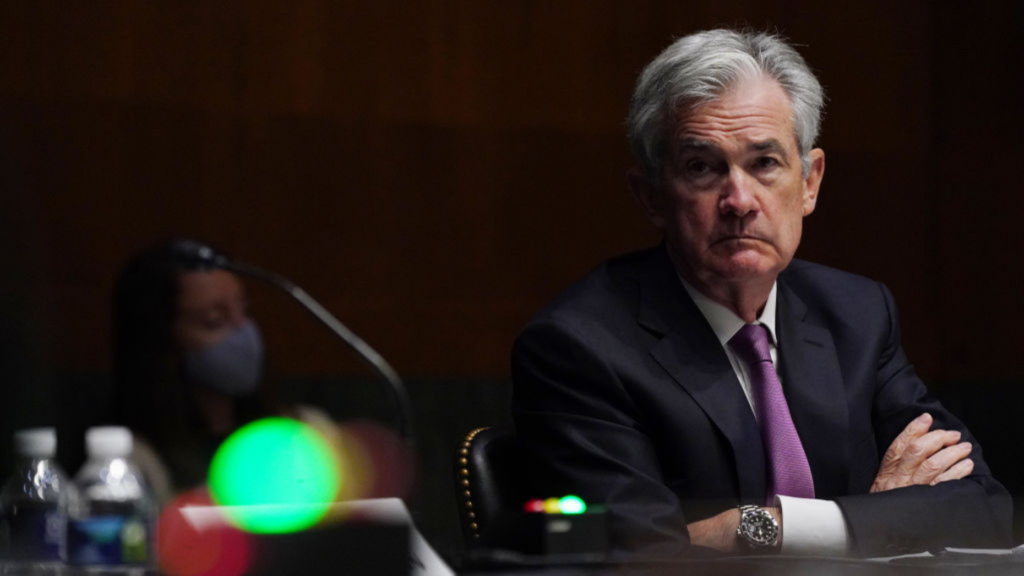Mortgage rates continued an upward run toward 5 percent this week, after Federal Reserve Chairman Jerome Powell acknowledged that the invasion of Ukraine and COVID-related supply disruptions could drive inflation beyond the Fed’s previous forecasts.
Addressing the National Association for Business Economics on Monday, Powell added fuel to the fire by saying the Fed is prepared to raise short-term interest rates by 50 basis points at a time, if necessary, to fight inflation that’s been exacerbated by the war in Ukraine.
“The added near-term upward pressure from the invasion of Ukraine on inflation from energy, food, and other commodities comes at a time of already too high inflation,” Powell said. “In normal times, when employment and inflation are close to our objectives, monetary policy would look through a brief burst of inflation associated with commodity price shocks. However, the risk is rising that an extended period of high inflation could push longer-term expectations uncomfortably higher.”
Rates on 30-year fixed-rate conforming mortgages surged to 4.601 percent on Monday, the highest level since March, 2019, according to rate quote data compiled by Optimal Blue. The last time inflation fears drove rates on the workhorse conforming mortgage rate above 5 percent was in December, 2018, according to the Optimal Blue Mortgage Market Indices.
Mortgage rates approaching 5 percent threshold
Although the Optimal Blue Mortgage Market Indices lag markets by one day, 10-year Treasury yields, which are considered a good barometer of where mortgage rates are headed, continued to rise Tuesday, hitting a new 52-week high.
It was only last week that Fed policymakers approved a 25-basis-point increase in the federal funds rate — the first short-term interest rate hike since 2018. A 25-basis-point rate increase means borrowers paying down credit card debt and other short-term loans with adjustable rates can expect their interest rates to go up by a quarter of a percentage point.
Some Fed policymakers had been advocating for a more dramatic 50-basis-point increase to combat inflation. After war broke out in Ukraine, the Fed tried to calm financial markets by making it known that the central bank would limit itself to a more traditional increase of 25 basis points on March 16, due to uncertainties over the economic impact of Russia’s Feb. 24 invasion.
But Powell warned Monday that a 50-basis-point increase could still be warranted at a future meeting, as the war in Ukraine has generated a run on oil and other commodities, and recent increases in the price of consumer goods could be aggravated if the BA.2 COVID variant disrupts international supply chains.
When vaccines became widely available, expectations were that “the supply-side damage would begin to heal,” Powell said. Economists thought that once schools reopened, freeing parents to return to work, “labor supply would begin bouncing back, kinks in supply chains would begin resolving, and consumption would start rotating back to services, all of which could reduce price pressures.”
The current reality is quite different, Powell said, and the spread of the BA.2 variant is likely to spark another wave of supply chain disruptions.
“While schools are open, none of the other expectations has been fully met,” the Fed chairman said. “Part of the reason may be that, contrary to expectations, COVID has not gone away with the arrival of vaccines. In fact, we are now headed once again into more COVID-related supply disruptions from China. It continues to seem likely that hoped-for supply-side healing will come over time as the world ultimately settles into some new normal, but the timing and scope of that relief are highly uncertain.”
While Powell’s speech sent mortgage rates soaring, uncertainties about the situation in Ukraine and the global economy could always bring them back down.
In a forecast issued Monday, economists at the Mortgage Bankers Association predicted mortgage rates won’t climb past 4.6 percent over the next year. In a March 10 forecast, Fannie Mae economists said they see rates stabilizing at closer to 4 percent this year and next.
Mortgage rate forecasts diverge
Source: Mortgage Bankers Association and Fannie Mae forecasts.
But mortgage rates have been on a rollercoaster ride in recent weeks, as trillions of dollars in investment capital around the globe seeks higher returns.
Mortgage rates drop when investors seeking higher yields — or a safe haven from the ups and downs of the stock market — buy government bonds and mortgage-backed securities (MBS).
“Mortgage rates have been exceptionally volatile in recent weeks, given the profound uncertainties both with respect to the geopolitical situation and monetary policy,” said Michael Fratantoni, chief economist at the Mortgage Bankers Association, after the Fed raised short term rates last week. “Hopefully, the Fed’s actions and explanations can help to reduce the policy uncertainty, which would then diminish some of the current volatility.”
In a note to clients Tuesday, Pantheon Macroeconomics Chief Economist Ian Shepherdson warned of an impending — if temporary — slowdown in the pace of economic growth. Businesses aren’t adding to their inventories at the “frantic” pace they were at the end of last year, and job growth may also be slowing, prompting the Pantheon Macroeconomics team to lower its forecast for first quarter GDP growth to zero.
“To be clear, we think it very likely that zero Q1 growth and zero March payrolls would be temporary glitches, given the strength of final demand and the favorable fundamentals in both the household and corporate sectors,” Shepherdson wrote. “But with markets now expecting rate hikes at every [Federal Open Market Committee] meeting, the risk of an over-reaction to soft readings in key numbers is real, especially if the month-to-month core CPI prints slow markedly over the next few months.”
In addition to the federal funds rate, economists are keeping an eye on what Fed policymakers say about plans to start shrinking the central bank’s nearly $9 trillion balance sheet.
Having wound down its $120 billion in monthly purchases of mortgage-backed securities and Treasurys, the Fed has signaled that it wants to start letting those assets run off its books.
Powell reiterated Monday that the Fed might decide to start shrinking its balance sheet as soon as its next meeting in May, “though that is not a decision we have made.”
The trick for the Fed is to tighten monetary policy enough to lower inflation, without causing a recession, Powell said.
The Fed is currently projecting “a soft landing” for the economy, Powell said, “with inflation coming down and unemployment holding steady. Growth slows as the very fast growth from the early stages of reopening fades, the effects of fiscal support wane, and monetary policy accommodation is removed.”
“Some have argued that history stacks the odds against achieving a soft landing, and point to the 1994 episode as the only successful soft landing in the postwar period,” Powell acknowledged. “I believe that the historical record provides some grounds for optimism: Soft, or at least soft-ish, landings have been relatively common in U.S. monetary history. In three episodes—in 1965, 1984, and 1994—the Fed raised the federal funds rate significantly in response to perceived overheating without precipitating a recession.”
Get Inman’s Extra Credit Newsletter delivered right to your inbox. A weekly roundup of all the biggest news in the world of mortgages and closings delivered every Wednesday. Click here to subscribe.
Email Matt Carter



 Are You Interested in West Eleventh Residences Miami?
Are You Interested in West Eleventh Residences Miami? Are You Interested in ONE Park Tower by Turnberry?
Are You Interested in ONE Park Tower by Turnberry? Are You Interested in Diesel Wynwood Condominium?
Are You Interested in Diesel Wynwood Condominium? Are You Interested in Five Park Miami Beach?
Are You Interested in Five Park Miami Beach? Are You Interested in Cipriani Residences Miami?
Are You Interested in Cipriani Residences Miami? Are You Interested in Bentley Residences Miami?
Are You Interested in Bentley Residences Miami? Are You Interested in Baccarat Residences Brickell?
Are You Interested in Baccarat Residences Brickell? Are You Interested in Aria Reserve Miami?
Are You Interested in Aria Reserve Miami? Are You Interested in 888 Brickell Dolce & Gabbana | Miami?
Are You Interested in 888 Brickell Dolce & Gabbana | Miami? Are You Interested in 600 Miami WorldCenter?
Are You Interested in 600 Miami WorldCenter? Are You Interested in HUB MIAMI RESIDENCES?
Are You Interested in HUB MIAMI RESIDENCES? Are You Interested in WALDORF ASTORIA RESIDENCES?
Are You Interested in WALDORF ASTORIA RESIDENCES?